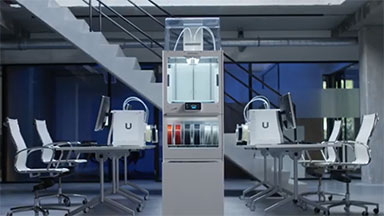Hexagon Automates 6-axis Production of Heavy Parts
The specialist programming tools provide accurate simulation and generate efficient 6-axis toolpaths to ensure that the advanced machinery can be used for increased productivity, company says.

The new dedicated six-axis tools provide greater toolpath control and more accurate simulation of processes, reducing the need for expert intervention on the shop floor. Image courtesy of Hexagon.
Latest News
June 15, 2021
New computer-aided-manufacturing (CAM) technology introduced by Hexagon’s Manufacturing Intelligence division enables ability to efficiently use complex 6-axis milling machine tools to produce large parts for various industries and applications. The specialist programming tools provide accurate simulation and generate efficient six-axis toolpaths to ensure that the advanced machinery can be used for increased productivity.
The new tools introduced in Hexagon’s EDGECAM software focus on six-axis machines equipped with two rotary axes on the head and one rotary table, where this sixth axis enables milling tools to machine all sides of a large part, including areas that are otherwise impossible to reach without repositioning workpieces. The new dedicated six-axis tools provide greater toolpath control and more accurate simulation of processes, reducing the need for expert intervention on the shop floor, improving the use of advanced machinery, and avoiding the risk of costly damage, company says.
“The ability to perform seamless ‘one-and-done’ operations with 6-axis machinery enables manufacturers to produce massive and often quite challenging components without the burden of underutilised machinery or over-reliance on expert intervention,” says Miguel Johann, product and market manager, Hexagon’s Manufacturing Intelligence division. “You may have the most sophisticated machinery in the world, but without software that can harness its strengths, it can be very difficult—If not impossible—to reap its true potential.”
Enhancements
EDGECAM improvements also provide greater flexibility for five-axis milling by offering tools that allow computer-numerical-control (CNC) programmers to select the level of automation they prefer when creating toolpaths. Using these tools, CNC programmers can choose to automate toolpath generation, manually create all toolpaths or generate toolpaths using a combination of automated and manual tools. The ability to customize programming preferences increases control over exactly how parts are machined, helping users cut programming time on tasks that are simple to automate and making it easier to work more closely with complex toolpaths when needed.
Productivity is also improved with rough grooving operation optimization that eliminates unnecessary machine movement, resulting in a reduction in cycle time of up to 60%. When enabled, the configuration ensures that the system will recognize the shape of irregular stock when needed. By taking the true shape of stock into account, the software helps users to avoid the generation of surplus toolpaths that lead to ‘air cutting’ when the program is sent to the machine tool.
EDGECAM now makes it easier to execute helical toolpaths, offering manufacturers tighter and more efficient machining than is offered by the ramp approach, and opportunities to extend tool life with smoother and less damaging operations. Users need only define a minimum helix value for roughing operations, then the software ensures parts are cut using a helical tool pattern and the toolpath will not revert to a ramp approach. Computer performance optimizations also nowreduce programming time, generating roughing toolpaths faster than previous software for wireframe and solid models.
Waveform turning ensures that cutting tools maintain constant engagement with material, as well as a constant chip load to extend tool life, but can result in long NC code programs. A new option reduces the amount of numerical control (NC) code generated by up to 75% by converting line segments into fitted arcs that require less NC code to program. Users benefit from smoother waveform toolpaths and machining, and faster executed code that is also shorter so that it runs effectively on older machine tools.
Interoperability with Hexagon’s CAM portfolio benefits EDGECAM users working with three-axis milling operations. They can now test and optimize programs in Hexagon’s NCSIMUL Essential machining simulation software. Full machining assemblies, including tooling data, are imported directly into NCSIMUL Essential, where the programmer can dynamically interact with toolpath, identify code being simulated, interrogate and measure workpieces, and compare and analyze stock.
For more information, visit http://www.edgecam.com.
Sources: Press materials received from the company and additional information gleaned from the company’s website.
More Hexagon Manufacturing Intelligence Coverage
Subscribe to our FREE magazine, FREE email newsletters or both!
Latest News
About the Author
DE’s editors contribute news and new product announcements to Digital Engineering.
Press releases may be sent to them via [email protected].





